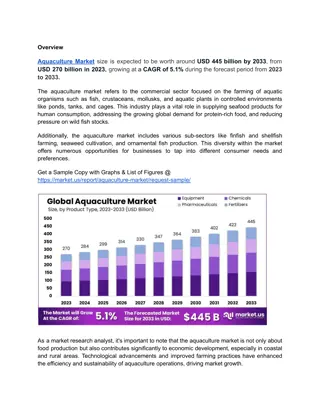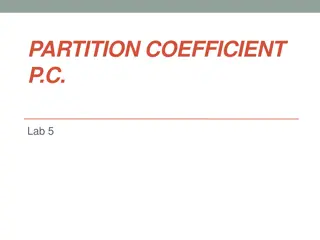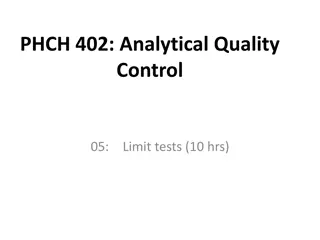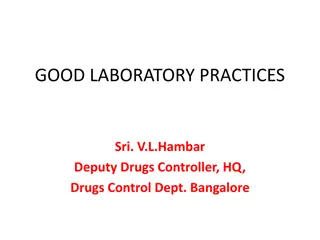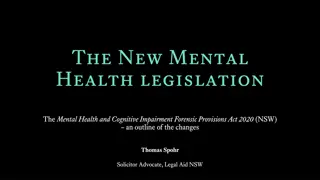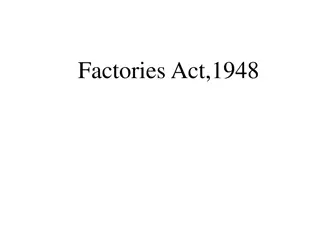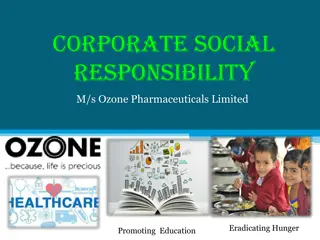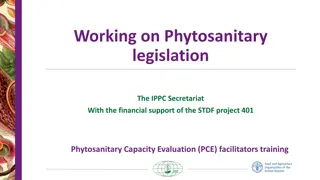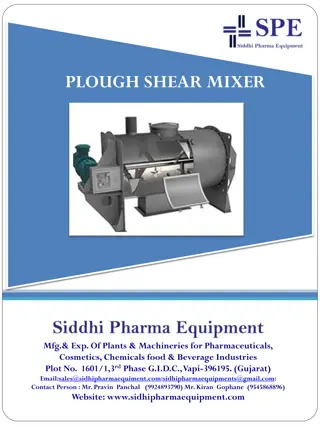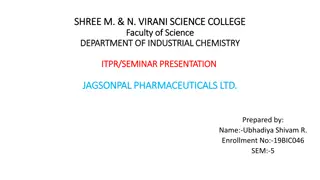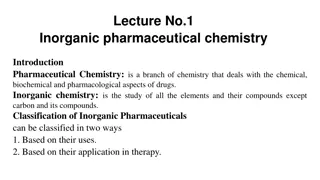Pharmaceuticals Legislation Overview
The Pharmaceuticals Legislation encompasses the Drugs and Cosmetics Act of 1940 in India, regulating the import, manufacture, and distribution of drugs. This act ensures safety, effectiveness, and quality standards for pharmaceutical products, with provisions for quality control, labeling, and inspection procedures.
Download Presentation

Please find below an Image/Link to download the presentation.
The content on the website is provided AS IS for your information and personal use only. It may not be sold, licensed, or shared on other websites without obtaining consent from the author.If you encounter any issues during the download, it is possible that the publisher has removed the file from their server.
You are allowed to download the files provided on this website for personal or commercial use, subject to the condition that they are used lawfully. All files are the property of their respective owners.
The content on the website is provided AS IS for your information and personal use only. It may not be sold, licensed, or shared on other websites without obtaining consent from the author.
E N D
Presentation Transcript
Topic :- Pharmaceuticals Legislation Mr. Ajit K. Dhas Department of Chemistry Deogiri College, Aurangabad 1
M. Sc. II (IV Semester) Pharmaceuticals Legislation by Ajit Dhas Assistant Professor Department of Chemistry, Deogiri College, Aurangabad
Pharmaceuticals Legislation Contents: Introduction to drug acts, drug rules, FDA & ISO standard & their amendments, ISO-9000: an overview, clauses, requirement of ISO-9000, significance & scope, steps for ISO-9000, implementation, series of ISO, case studies of ISO, ISI, Agmark and other standard for good & cosmetics particularly w. r. t. the testing of drugs and raw material concerned.
Introduction to drug acts The Drugs and Cosmetics Act, 1940 is an act of the Parliament of India which regulates the import, manufacture and distribution of drugs in India. The primary objective of the act is to ensure that the drugs and cosmetics sold in India are safe, effective and conform to state quality standards. The related Drugs and Cosmetics Rules, 1945 contains provisions for classification of drugs under given schedules and there are guidelines for the storage, sale, display and prescription of each schedule.
Introduction to drug acts The term "drug" as defined in the act includes a wide variety of substance, diagnostic and medical devices. The act defines "cosmetic" as any product that is meant to be applied to the human body for the purpose of beautifying or cleansing. The definition however excludes soaps. In 1964, the act was amended to includeAyurveda and Unani drugs.
Introduction to drug acts The Section 16 of the act defines the standards of quality for drugs. The Section 17 defines "misbranding". A drug is considered misbranded if it claims to be of more therapeutic value than it actually is. The manufacturer of such a drug may be asked to suspend manufacture of the drug under Section 18. Section 27 deals with fake and adulterated drugs. The act requires more of that ingredients of the drugs should be printed on the label. The Section 22 defines the powers of the drug inspectors and Section 23 defines the strict procedure which should be followed by the inspectors during any raids.
The Drugs and Cosmetics Act Amendment The act has been amended several times. The following are a list of amending acts: The Drugs (Amendment) Act, 1960 (35 of 1960) The Drugs (Amendment) Act, 1962 (21 of 1962) The Drugs and Cosmetics (Amendment) Act, 1964 (13 of 1964) The Drugs and Cosmetics (Amendment) Act, 1972 (19 of 1972) The Drugs and Cosmetics (Amendment) Act, 1982 (68 of 1982) The Drugs and Cosmetics (Amendment) Act, 1986 The Drugs and Cosmetics (Amendment) Act, 1995 (71 of 1995) The Drugs and Cosmetics (Amendment) Act, 2008 (26 of 2008) Recent amendments - The Drugs and Cosmetics (Amendment) Act, 2017
Drug rules The Drugs and Cosmetics Rules, 1945 are the rules which the government of India established through the Drugs and Cosmetics Act, 1940. These rules classify drugs under given schedules and present guidelines for the storage, sale, display and prescription of each schedule. The Drugs and Cosmetics Rules, 1945 contains provisions for classification of drugs under given schedules and there are guidelines for the storage, sale, display and prescription of each schedule. The Rule 67 details the conditions of licenses. The Rule 97 contains the labeling regulations. The notable Schedules and their summary:
Drug rules Schedule G: Most of these drugs are hormonal preparations.The drug label must display the text "Caution: It is dangerous to take this preparation except under medical supervision" prominently. Examples of substances under this schedule: Testolactone, Hydroxyurea, Carbutamide, Primidone etc. Schedule H: The drug label must display the texts "Rx" and "Schedule H drug. Warning : To be sold by retail on the prescription of a Registered Medical practitioner only" prominently. It can only be supplied to licensed parties. It cannot be sold without a prescription and only the amount specified in the prescription should be sold. The time and date of prescription must be noted. Examples: androgenic, anabolic, oestrogenic and progestational substances; Alprazolam (Xanax), Hepatitis B vaccine, Ibuprofen, Vasopressin etc. If a Schedule H drug also comes under the purview of Narcotic Drugs and Psychotropic Substances Act, 1985, it must carry the texts "NRx" and "Schedule H drug. Warning: To be sold by retail on the prescription of a Registered Medical Practitioner only." on the label prominently. Schedule X: All the regulations of Schedule H apply. The retailer must keep a copy of the prescription for two years. The drugs must be kept under lock and key. Examples: Secobarbital, Glutethimide etc. Schedule J: Contains a list of various diseases and conditions that cannot be treated under any drug currently in market. No drug may legally claim to treat these diseases.
Drug rules Other Schedules and their summary: Schedule A: Contains various forms and formats of letters for applications of licensing etc. Schedule B: Contains fees structure for government-run labs. Schedule C: Contains various biological products and their regulation. Examples: Serums, Adrenaline Vitamins etc. Schedule D: List of drugs exempted from the provision of import of drugs Schedule E: Contains various poisons and their regulation. Examples: Sarpa Visha (Snake venom), Parada (Mercury) etc. Schedule F: This contains regulations and standards for running a blood bank. Schedule F-I: This contains regulations and standards for vaccines. Schedule F-II: This contains regulations and standards for surgical dressing. Schedule F-III: This contains regulations and standards for umbilical tapes.
Drug rules Schedule F-F: This contains regulations and standards for ophthalmic ointments and solutions. Schedule K: Contains various substances and drugs and their corresponding regulation. Schedule M: Contains various regulations for manufacturing, premises, waste disposal and equipment. Schedule N: Contains various regulations and requirements for a pharmacy. Schedule O: Contains various regulations and requirements for disinfectant fluids. Schedule P: Contains regulations regarding life period and storage of various drugs. Schedule P-I: Contains regulations regarding retail package size of various drugs. Schedule Q: Contains a list of permitted dyes and pigments in soap and cosmetics. Schedule R: Contains various regulations and requirements for contraceptives. Schedule S: Lists various cosmetics and toiletries, and directs the manufacturers of cosmetics to conform to the latest Bureau of Indian Standards requirements. Schedule T: Contains various regulations ofAyurvedic, Siddha and Unani products. Schedule U: Contains various regulations and requirements for record keeping. Schedule V: Contains standards for drug patents. Schedule Y: Contains requirement and guidelines for clinical trials. and requirements for manufacture
FDA & ISO standard The Food and Drug Administration (FDA): requires that medical device manufacturers establish and follow quality systems to help ensure products consistently meet applicable requirements and specifications. The quality system regulations (QSR) for FDA regulated products are known as current good manufacturing practices (CGMP). These requirements were first implemented in 1978 under the Federal Food, Drug and Cosmetic Act and defined in section 21 part 820 of the Code of Federal Regulations (21 CFR part 820).
FDA & ISO standard The Food and Drug Administration (FDA): For over a decade, these regulations primarily focused on manufacturing of medical devices. This changed with the Safe Medical Devices Act of 1990, which included product design controls. At the same time, the FDA sought to harmonize the CGMP regulations with applicable international standards. The primary standards included International Organization for Standards (ISO) 9001:1994* and 13485:1996.
FDA & ISO standard The ISO 9001 standard was entitled Quality Systems Model for Quality Assurance in Design, Development, Production, Installation, and Servicing . The ISO 13485 standard was entitled Quality Systems Medical Devices Supplementary Requirements to ISO 9001 . Whereas ISO 9001 emphasizes continual improvement and customer satisfaction, 13485 encompasses the requirements that medical device manufacturers must incorporate into their management systems. These include maintaining effective processes while meeting regulatory requirements, customer requirements and managing risks. A manufacturer that is certified to ISO 13485 does not inherently fulfill the FDA regulatory requirements. However, this certification aligns the company management systems with requirements of the FDA s QSR and international regulatory requirements. As such, 13485 provides a management system that serves as a framework for compliance to various regulatory and customer requirements.
FDA & ISO standard ISO 13485 certification also does not fulfill the requirements of ISO 9001, nor is it equivalent to or have the ability to take the place of any country-specific requirement for medical device manufacturers. Benefits can be reaped from being both 9001 and 13485 certified, because 9001 focuses on business aspects not found in 13485 that are good for all businesses. Also, ISO 13485 is no longer thought of as pertaining solely to finished medical device manufacturers. Many manufacturers are requiring their sub-tier suppliers to attain ISO 13485 certification as well. * ISO standard nomenclature includes the standard identification number, followed by the year of implementation. The current standards are ISO 9001:2015 and 13459:2016.
ISO-9000: an overview ISO 9000 is defined as a set of international standards on quality management and quality assurance developed to help companies effectively document the quality system elements needed to maintain an efficient quality system. They are not specific to any one industry and can be applied to organizations of any size. ISO 9000 can help a company satisfy its customers, meet regulatory requirements, and achieve continual improvement. It should be considered to be a first step or the base level of a quality system.



